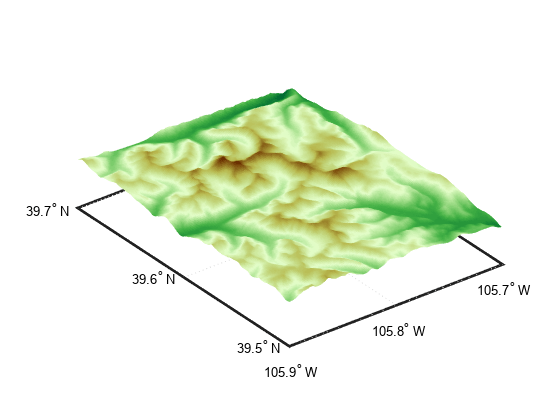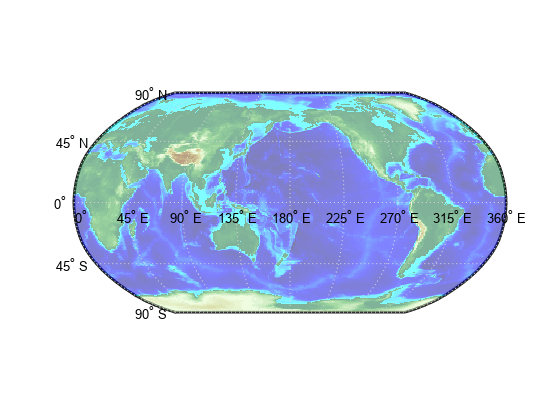meshm
Project regular data grid on axesm-based map
Description
meshm( displays a
surface on the current Z,R)axesm-based map by warping the regular data grid
specified by Z, with spatial reference R, to a
projected graticule mesh. The color of the surface varies according to the values in
Z. This syntax displays the surface in a horizontal plane with all
height values set to 0.
meshm(___, specifies
surface properties using one or more name-value pair arguments. For example,
Name,Value)"FaceAlpha",0.5 creates a semitransparent plot.
s = meshm(___)s to modify the plot after creation. For
a list of properties, see Surface Properties.
Examples
Input Arguments
Name-Value Arguments
Output Arguments
Tips
The
FaceColorproperty of the surface object depends on the size of the graticule mesh. Themeshmfunction setsFaceColorto"flat"when the size of the graticule mesh matches the size ofZ, and"texturemap"otherwise.The
meshmfunction projects the graticule mesh using the projection specified by theMapProjectionproperty of theaxesm-based map. To improve the resolution of the plot, increase the size of the graticule mesh. Increasing the size of the graticule mesh can increase the amount of time MATLAB requires to display the surface.


